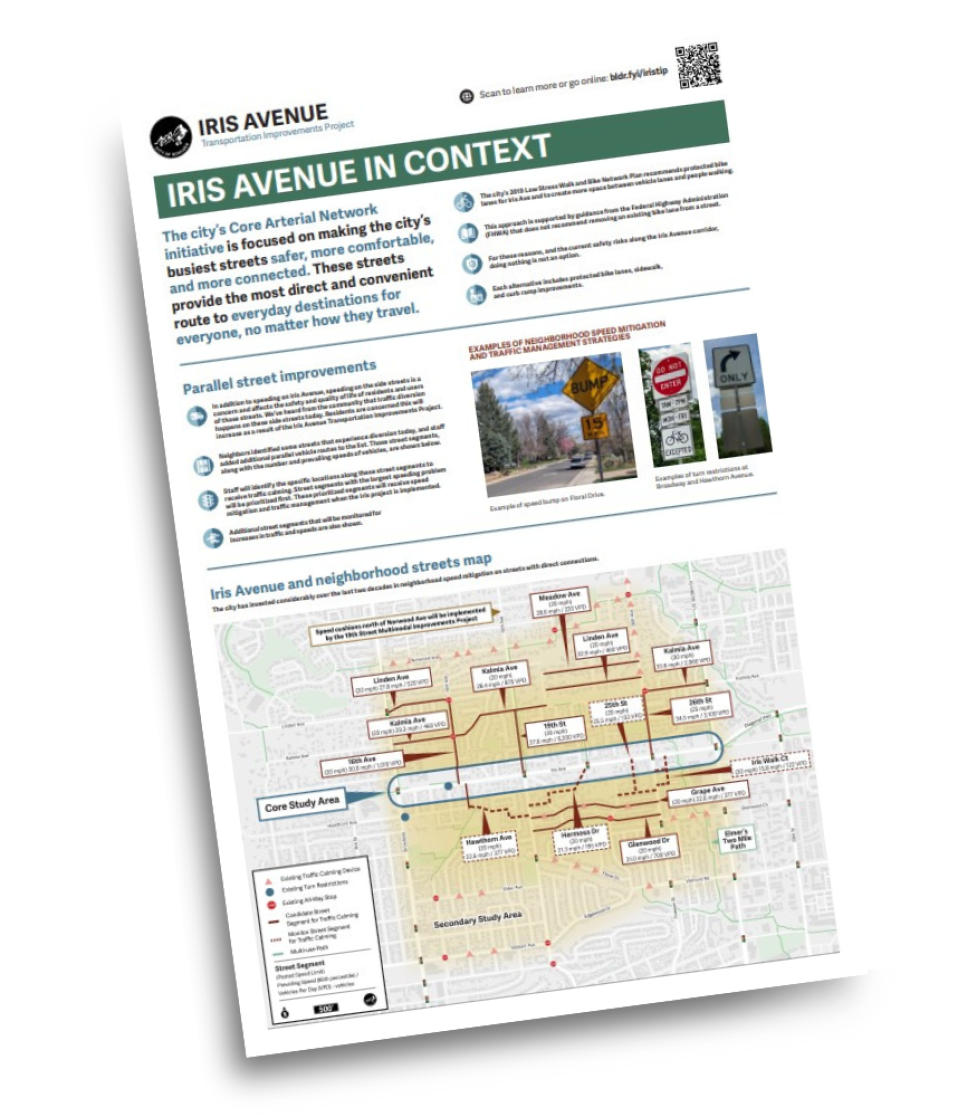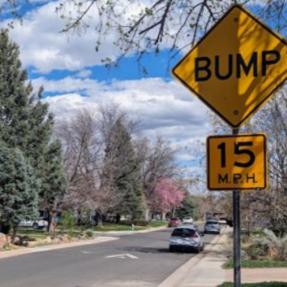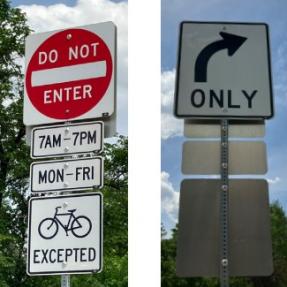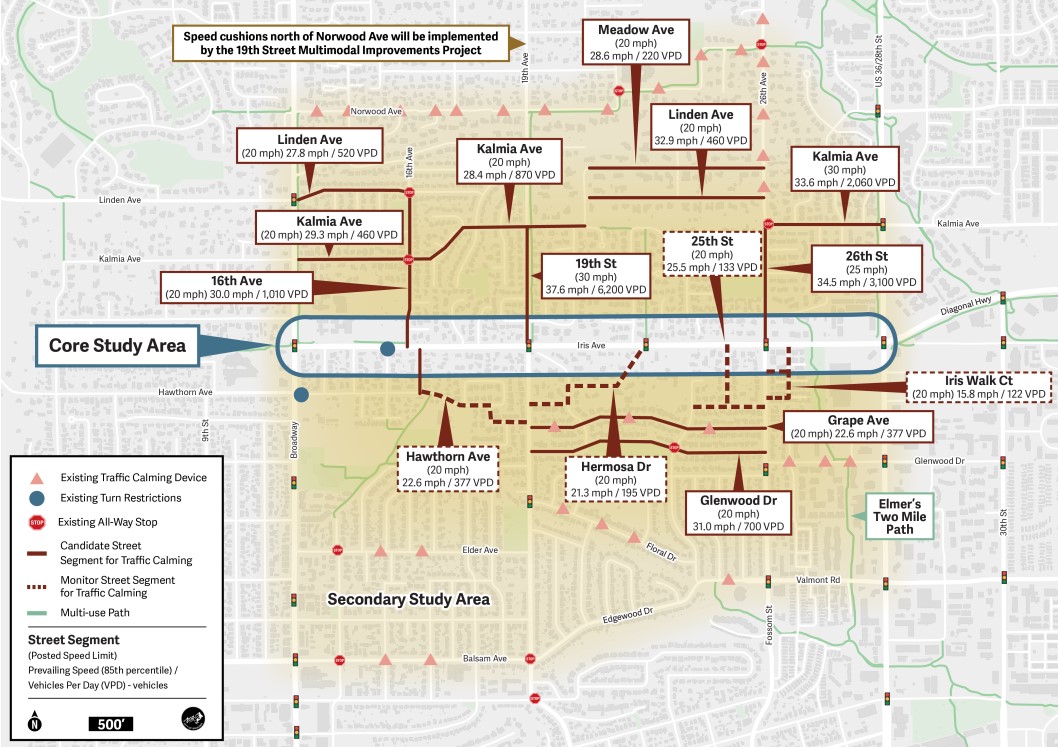
The city’s 2019 Low Stress Walk and Bike Network Plan recommends protected bike lanes for Iris Ave and to create more space between vehicle lanes and people walking.

This approach is supported by guidance from the Federal Highway Administration (FHWA) that does not recommend removing an existing bike lane from a street.

For these reasons, and the current safety risks along the Iris Avenue corridor, doing nothing is not an option.

Each alternative includes protected bike lanes, sidewalk, and curb ramp improvements.







